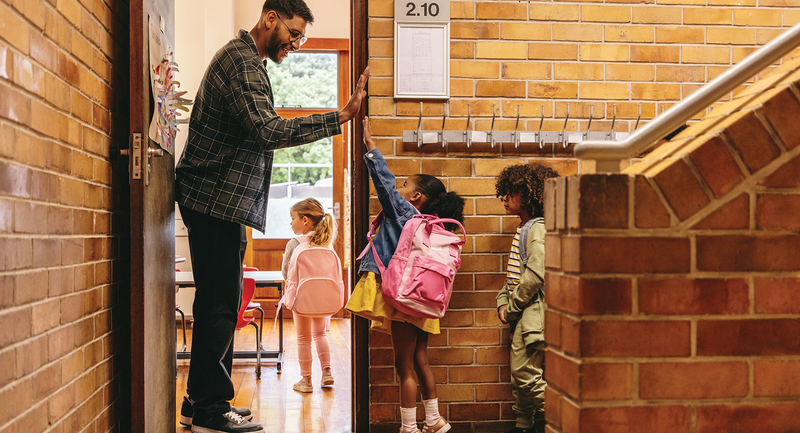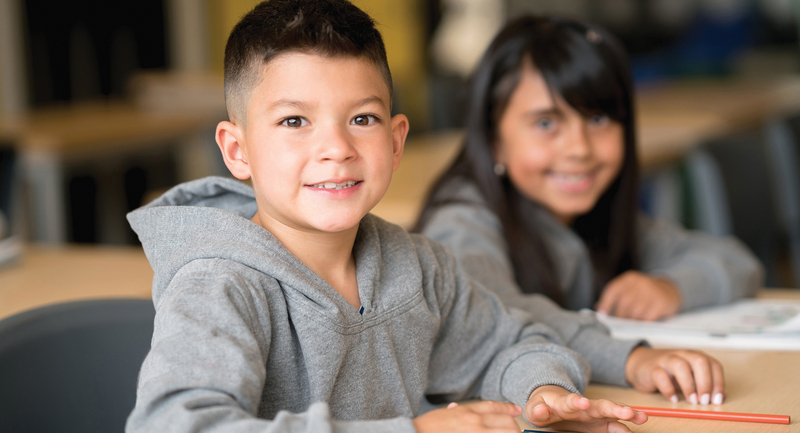School experiences and outcomes for Black students have chronically lagged behind their peers from other ethnic and racial groups for decades. There is a long history and established body of literature that details the myriad ways that schools have fallen short in addressing the education needs of Black students (Ladson-Billings, 2022).
Issues such as legally sanctioned segregated schools, inadequate funding, low teacher expectations, anti-Black racism, and non-responsive curriculum have all contributed to disparate outcomes for Black students (Spencer & Ullucci, 2024). The COVID-19 pandemic had a disproportionate impact on Black learners, largely due to a lack of resources at home and within schools. Additionally, over the past several years, there have been growing efforts to exclude Black history and perspectives in schools via book banning and erroneous anti-Critical Race Theory campaigns. Some argue that focusing on the mistreatment, undereducation, and marginalization of Black students in school is necessary because it increases the visibility of these problems. Dumas (2013) argues that centering Black suffering is essential because:
[For] many black children and families in the United States . . . and elsewhere, schooling is a site of suffering. I believe it is the suffering that we have been least willing or able to acknowledge or give voice to. (p. 2)
While we understand these sentiments, the reality is that not all Black students are underperforming—many are thriving, academically and socially. A growing number of researchers have discussed the importance of Black joy in schools, where students are able to experience school in a fun, stimulating, expressive, and culturally affirming way (Muhammad, 2023). The persistent focus on Black student failure in many ways only contributes to a narrative that Black student success is not happening anywhere.
To be clear, while many school sites are still quite harmful for Black students, we believe that such narratives can be dangerous and can reinforce deficit narratives about Black students. Therefore, we feel it is equally critical to ask the question, “What is right with Black students?” This perspective shift aligns with the focus of this special issue: highlighting what is going right in schools.
Here, we center the question: What do schools look like when they get educating Black students right?
Success Stories
As educators and education researchers, we are inspired by the work of education scholar Gloria Ladson-Billings (2022), who invites researchers to explore what’s going right in schools where Black students are succeeding. In this article, we highlight examples of two schools that we observed as part of our research that are serving Black students well and in a manner that should be studied and possibly replicated. We ask: What is happening in schools where Black students are succeeding and thriving? What are the practices, policies, and pedagogies that contribute to Black student success? What do schools look like when Black students experience joy?
It is our hope that these questions and school examples inform a larger conversation around what is working well when it comes to the education of Black students. To uplift this work, we have identified the following strategies from two schools (one elementary and one high school) that serve mostly Black students. These schools were selected because they demonstrate measurable success in fostering Black student achievement and well-being, as evidenced by high academic performance, improved social-emotional outcomes, and positive school climate indicators.
Our hope is that by detailing critical components within each of the five areas below, these strategies can serve as instructive tools for schools and educators to improve how they think about, work with, and educate Black students. Moreover, we hope to contribute to a paradigm shift in educational discourse where Black students are not only present in literature on what we get wrong, but foregrounded in explorations of what we get right.
These schools are intentional in ensuring that students see themselves in the curriculum and pedagogy.
1. Create a comprehensive ecosystem of support.
At Redd Elementary School in Southern California, Black student success is the norm. Speaking with the principal and teachers of this predominantly Black school, it becomes clear that high expectations are woven into the fabric of how the school operates.
One of the keys to student success at Redd is what Jaleel (2025) refers to as a comprehensive ecosystem of support, which he defines as “a complex network of communal assistance shaped by school culture and personnel, fostering connections among all stakeholders toward shared goals.” Ecosystems of support are critical for Black student success, serving as protective mechanisms that can mitigate resource scarcity and ensure environmental safety.
According to Redd’s principal, Dr. Dawna Canady, the success of Black students at Redd is rooted in the school’s approach to support: “I want our children to feel like they’re just being wrapped up. They feel safe; they feel protected.” At Redd, educators have built an ecosystem of support by engaging parents, providing resources to teachers, and maintaining a deep care and concern for Black students.
Jaleel’s research found that many Black parents at Redd expressed that school personnel “love on your children.” This sense of love and support from teachers and staff is reflected in students’ academic performance, as Black students at Redd consistently exceed state proficiency rates in English language arts and math.
2. Prioritize a culturally responsive and rigorous curriculum.
When cultural affirmation is the norm, Black students thrive. Ladson-Billings (2022) describes cultural responsiveness as the ability of students to draw on their own backgrounds, languages, histories, customs, and experiences as they gain fluency and facility in at least one other culture—namely, school culture in the pursuit of academic success.
At Redd Elementary School, curriculum that honors Black people, culture, and history is prominent. Famous sayings and quotes from former President Barack Obama, Maya Angelou, Ida B. Wells, and James Baldwin line the hallways.
In one 4th grade classroom we observed, the teacher led a lesson about the Black Panther Party and its commitment to food security, community justice, and addressing abusive policing practices. When asked about her approach, she said that “students need to see, hear, and learn about people who look like them.”
At McCune High School in the greater Los Angeles area, culturally responsive and rigorous teaching is evident in the school’s focus on community health. In one classroom, a focus on addressing hypertension and diabetes in the Black community actively engages students, drawing their attention to racial disparities in access to health care. In another classroom, students discuss the importance of a community garden, clean and healthy food, and food deserts. The topics discussed from classroom to classroom are anchored in the realities of the surrounding community and are explored with depth, rigor, and complexity. As one McCune teacher commented, “We believe that education should be used to transform our communities to be better places.”
3. Celebrate and affirm Blackness and its diversity.
Schools that are adequately serving Black students are intentional in making sure that they see themselves in the curriculum and pedagogy throughout the school. At both Redd and McCune, it was apparent that Black history, culture, life, and experiences were celebrated through student work and other signage and messages throughout the halls.
As one student from McCune said, the prevalence of Black history was important because,
We all learn Black history, and we all learn our different cultures, and it helps us, like, get smarter. And because there are a lot of Black students, it makes us feel more comfortable, and most of our students in the school get a lot of threes and fours.
Schools that adequately serve Black students recognize that they are not monolithic, and as a result, engage students in the “diversity in Blackness.” This is important to note because these schools recognize, respect, and honor individual uniqueness. Moreover, what was evident at both schools was the wide range of Black experiences that were taught. Lessons incorporated the history and culture of Black people in the U.S. and throughout the Caribbean, African presence in Europe, and the presence of Black people in Mexico. The curriculum highlighted the variety of Blackness not only geographically but also across social class, language, mixed-race backgrounds, and gender identities.
Schools that adequately serve Black students recognize that they are not monolithic.
4. Engage and support Black families.
One of the most critical steps schools can take to ensure Black student success is the active engagement of families and caregivers. In schools where Black students are thriving, their families are involved in decision-making processes, contribute to various school activities, and are integral to the school community. It is well-established that students perform better academically when their caregivers are involved in school settings (Goodall & Montgomery, 2014).
However, in Jaleel’s research, he discovered that to engage Black families, schools must demonstrate a commitment to making their involvement persistent and meaningful. Historically, schools have been exclusionary spaces for Black people and may still represent sites of trauma for many Black caregivers. Schools need to acknowledge this history and adopt a variety of approaches to foster greater Black parental involvement. School leaders should consider the following questions:
What opportunities does my school site offer for Black parents to be involved in their child’s education?
How often do I communicate with Black families outside of school settings?
Is my school producing data that shows Black parents that this school cares about Black students?
Is there evidence that when Black parents voice concern, appropriate changes are made?
Like parents from other racial and ethnic backgrounds, Black parents care deeply about their children’s education and want to be engaged in school spaces. Both McCune and Redd had high levels of Black parental engagement because they effectively communicated to Black caregivers that they were valued and welcomed in educational environments. These schools also provided numerous opportunities for Black caregivers to engage with school personnel and participate in events, both in person and virtually.
5. Hire educators who believe in Black students.
Both Redd and McCune cultivated environments where the adults in the building believe in the potential of Black students to excel academically, contribute positively to their communities, and represent their families with pride.
We cannot expect educators to effectively teach Black students if they harbor anti-Black biases or adopt deficit-based views of Black people. Success in schools is strongly tied to having educators who see the best in all students. In the hallways of both schools, there is a palpable sense of belief in and encouragement of students, conveyed through smiles, greetings, and supportive interactions between teachers, administrators, and students. These everyday affirmations communicate a consistent message to Black students: “We believe in you.”
At both Redd and McCune, teachers’ high expectations and their rigorous academic standards are a direct reflection of their beliefs about the abilities of Black students. Mr. David Smart, the principal at McCune, consistently told us that at McCune, “We don’t hire you or bring you on unless you believe in the ability of Black students to learn.”
A similar sentiment was offered by Dr. Canady when she said, “Educators need to completely eradicate any thoughts they may have around deficit, and Black students being defiant. All of that leads to a lack of expectations and just thwarts progress.”
It is important to recognize the pivotal role of school leaders in shaping these beliefs. According to Riehl (2000), school leaders, due to their central role within educational spaces, have the power to influence staff perspectives on critical issues like diversity. The leaders at Redd and McCune were intentional in presenting their staff with examples of Black excellence, joy, and diversity. Furthermore, they encouraged teachers to incorporate these positive and expansive perspectives of Blackness into their curriculum. Conversations with students revealed that Black excellence was an explicitly communicated goal at both schools.
Ecosystems of support are critical for Black student success.
The Need for a Different Narrative
When schools get things right, they are student-centered, affirm students’ identities, have caring adults in the schools, and have rigorous and responsive curriculum. The same ingredients are the case for Black students. They deserve the same type of learning environment as other students.
What was evident and working well at both Redd and McCune was how these schools created an ecosystem that was centered on high expectations and love for Black students. What worked in these schools was their intentionality around connecting culture and identity to learning. More schools need to consider how to replicate these five key approaches observed at Redd and McCune. We would contend that many educators and schools across the nation already have the skill to do right by Black students. The question is: Do they have the will?









